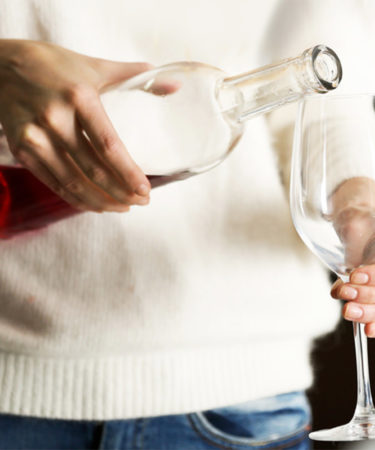Let’s clear something up: Blush is not rosé but is really Vin Gris yet blush is both Vin Gris and rosé. Clear? Didn’t think so. The pinkish spectrum of wine has a unique history in the US and is the reason we have the term blush. The word is not used much anymore but for a time it was all the rage. And that’s created some confusion.
Pink hued wine is generally made in two ways, both of which have French names. One way is Vin Gris where black skinned grapes (red wine grapes) are used to make white wine by implementing a light pressing after harvest and fermenting that pressed juice without the skins (no maceration). This results in slightly sweet but mostly dry pale pink almost greyish (Gris) wines.
The other way has the oh so sexy title of saignee (bleed) where red skinned grapes are allowed to macerate (leaching color from the skins) for a small amount of time to give the juice the desired color and depth before the fermentation process that creates rosé. This style brings a bit more structure to the pink world of wine because of more phenolics (organic junk) in the juice.
What’s similar about both Vin Gris and rosé however is that they’re both made like white wine in that the juice is fermented without skin contact.
So where does the word blush fit into all this craziness? The idea of blush wine came about with the birth of White Zinfandel in the 1970’s, the result of two “happy” accidents by Sutter Home’s winemaker Bob Trinchero, but was not really used for marketing purposes until the 1980’s being trademarked by Mill Creek in 1981.
For our boy Bob the first happy accident was more in the vein of saignee where he bled off some juice from a fermentation tank to make a deeper red Zinfandel – less juice and more skins means a higher ratio of skins to juice which means more powerful red. The runoff was made into a rosé and sold like any other dryish pink wine. The second happy accident, and the catalyst of for the White Zin craze, was more in the vein of the Vin Gris Style. While making rosé from the Zinfandel grape the tank went through what is called Stuck fermentation where the yeast cells die before the the process is complete leaving one with a sweeter pink wine. He bottled this and instead of calling it rosê he dubbed it White Zinfandel. Although the grapes were not pressed as with Vin Gris the results of both are rather similar.
In the 70’s and 80’s the US was a bit confused with the idea of rosé. We were in the nascent stages of our wine drinking culture and were comfortable with red and white wine. But any other color kind of freaked us out. So instead of calling the pink hued wine rosé we started attaching white to labels as in White Merlot and White Cabernet Sauvignon. These were essentially rosés but this way of labeling was easier to digest on a consumer label. But just calling it white this and white that did not define the color spectrum so the word Blush was used to do so.
Up until the late 90’s blush was the popular term for pink domestic wine which gobbled up 22% of all wine consumed in the U.S. As our palates evolved by the early aughts rosé from France came onto our market with a force. The dry crisp style of these wines were well received and by 2014 the blush idea went to the wayside with US winemakers trying to replicate the French style instead.
Today rosé from the US is a thing and winemakers are being smarter about it, using both the saignee and Vin Gris style depending on their preference and goals, focusing on quality. And so the word blush is now synonymous with the sweet sticky White Zinfandel, the last of the white this and white that from the 80’s.
So blush is rosé but not really. But kind of is. But not really.
